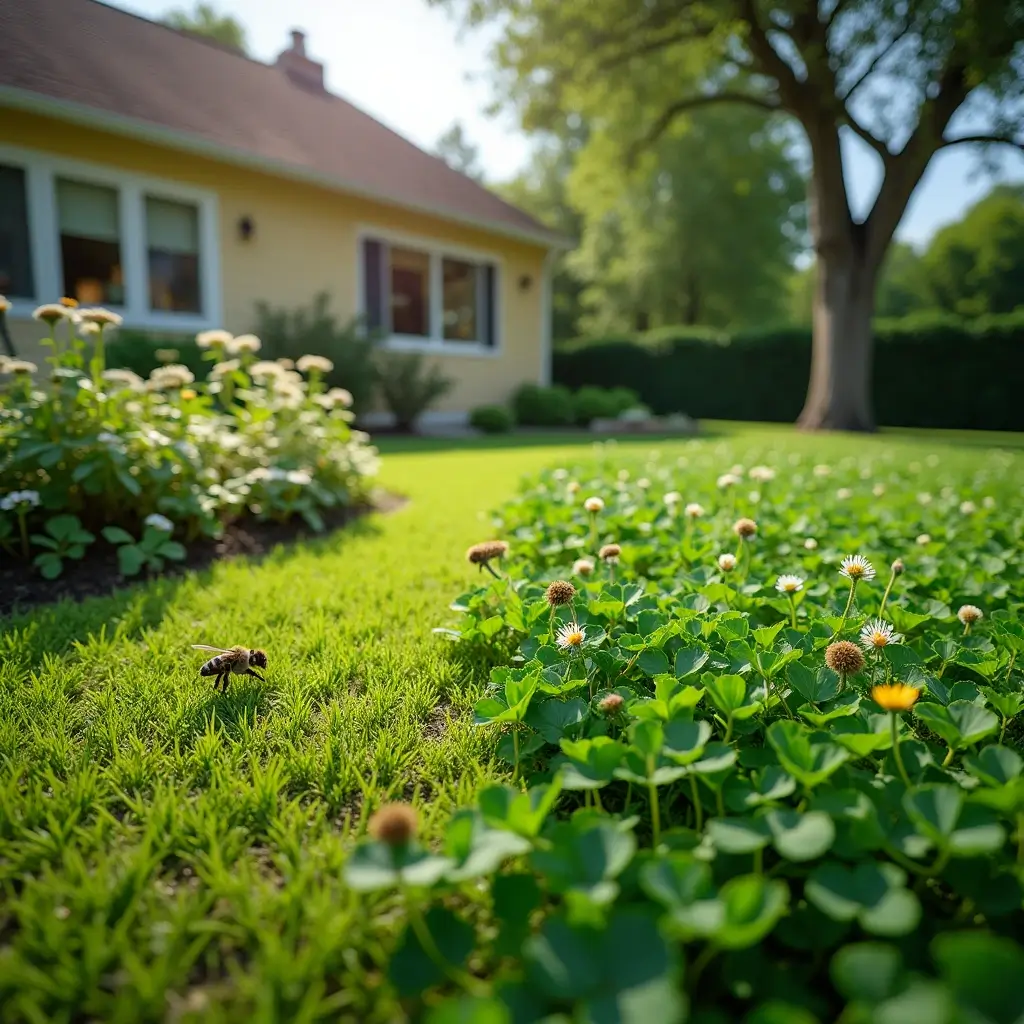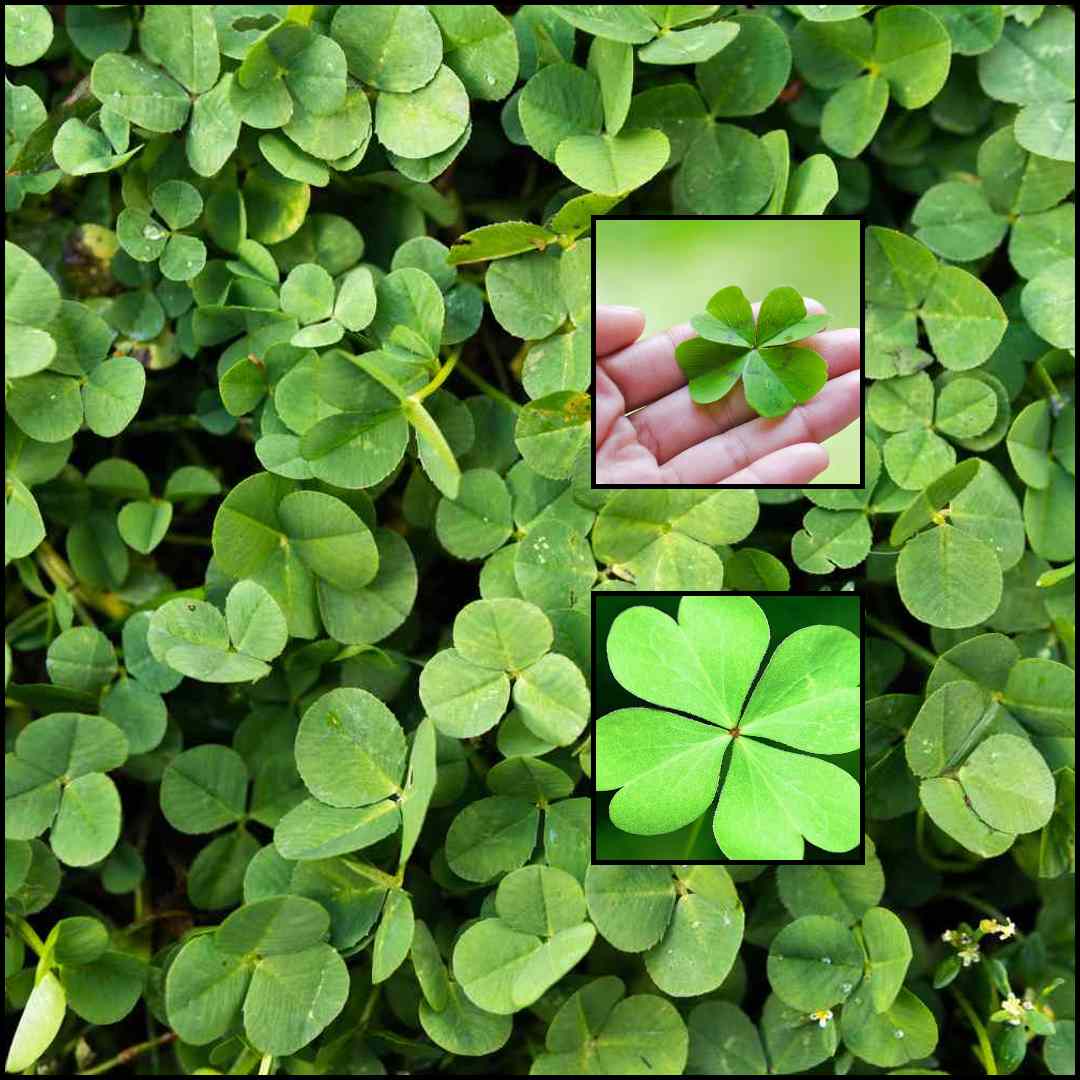Are you tired of the constant maintenance and water consumption required by traditional grass lawns? If so, plant clover might be the solution you’ve been looking for. Planting clover is not only a sustainable alternative to grass, but it also offers numerous benefits for your lawn and the environment. Whether you’re looking to add clover to an existing lawn or start fresh with a full clover lawn, this guide will walk you through everything you need to know about how to plant clover and care for it
The Benefits of Clover in Lawns
Before we dive into the how-to of planting clover, it’s important to understand why clover is an excellent choice for your lawn. Here are some compelling reasons to consider it:
1. Nitrogen Fixation
One of the most significant benefits of clover is its ability to fix nitrogen in the soil. This natural process enriches the soil, reducing the need for fertilizers. Unlike traditional lawns, which require chemical fertilizers, clover offers a sustainable, eco-friendly solution.
2. Drought-Tolerance
Clover is known for being drought-tolerant. Once established, it requires far less water than traditional grass lawns, which need constant watering, especially during the summer months. This makes clover ideal for regions with water restrictions or those looking to conserve water.
3. Hardy and Low Maintenance
Clover can withstand heavy foot traffic, pets, and drought conditions, and it stays green longer than grass. It’s a hardy, low-maintenance plant that requires minimal care once established, reducing your time spent on lawn upkeep.
4. Wildlife-Friendly
Bees and other pollinators are drawn to clover when it blooms. By planting clover in your lawn, you’re supporting local wildlife and creating a more biodiverse garden.
5. No Burn Patches
Unlike traditional grass, clover won’t turn yellow when your pets are around. This makes it a great choice for pet owners who are tired of unsightly burn patches on their lawns.

Choosing the Right Clover for Your Lawn
When considering clover for lawns, the most commonly used variety is Dutch White Clover. This variety is especially well-suited for lawns due to its:
- Green all year long: Stays green from spring through fall.
- Pollinator-friendly blooms: Attracts bees when it flowers.
- Sun requirements: Needs 4-6 hours of sun daily.
- Winter hardiness: Overwinters well, even in cold zones (such as Zone 4).
- Resistance to pests: Dutch White Clover is resistant to chafer beetles, making it a resilient choice for your lawn.
If you’re aiming to create a sustainable lawn that requires minimal maintenance and is eco-friendly, Dutch White Clover is an excellent choice.
Best Time to Plant Clover
Knowing the ideal time to plant clover is crucial for ensuring its successful establishment. Planting clover in spring is generally the best option, with mid-May being the optimal time. This is when soil temperatures reach around 15°C (59°F), which is perfect for seed germination.
Steps to Plant Clover Seeds
Here’s a step-by-step guide to help you plant clover in your lawn successfully:
- Prepare the Soil
- Remove any weeds, stones, and debris from the area.
- Rake or till the top layer of soil to loosen it, ensuring the soil is soft and ready for seed planting.
- Mix Clover Seed with Sand or Soil
- Clover seeds are small and can be challenging to spread evenly. To aid in distribution, mix the seeds with sand, sawdust, or fine soil.
- Broadcast the Seed
- Use a broadcast spreader to distribute the clover seed evenly across the prepared area. Make sure to spread the seeds in multiple directions to ensure even coverage.
- Rake and Water
- Lightly rake the soil to cover the seeds, but do not bury them too deep. Water the area thoroughly and keep it moist for the next couple of weeks to encourage germination.
- Avoid Fertilizing
- Unlike grass, clover doesn’t need fertilization. Its nitrogen-fixing ability enriches the soil naturally.
How to Overseed with Clover
If you already have an established lawn and want to incorporate clover, overseeding is a great option. Follow these steps for a successful overseeding process:
- Mow the Lawn
- Begin by mowing your lawn as short as possible without scalping it. This gives the clover seeds a better chance to make contact with the soil.
- Rake the Lawn
- Rake the lawn to remove thatch and debris, and lightly aerate the soil if necessary to ensure the seeds can penetrate.
- Broadcast Clover Seeds
- Mix the clover seeds with fine sand or soil and spread them evenly over the lawn using a broadcast spreader. Water the seeds daily for the first two weeks.
How to Care for Your Clover Lawn
Once your clover lawn is established, it’s important to care for it properly to maintain its health and appearance. Here are some tips:
- Mowing
- After the clover has matured and dropped its seeds, mow the lawn closely (about 2 inches from the ground). This encourages the clover to establish its roots. Once it’s well-established, you can allow the lawn to grow to about 3 inches tall.
- Watering
- While clover is drought-tolerant, it’s essential to water it regularly, especially during the first few weeks after planting. Once established, it will require less frequent watering.
- Avoid Herbicides
- Never use herbicides on a clover lawn, as they can damage or kill the clover. This is one of the reasons why clover lawns are so low-maintenance — they don’t require chemical treatments.
- Reseeding
- Over time, your clover lawn may need reseeding, typically every 2-3 years, to keep it looking lush and full. Simply overseed with more clover and follow the same steps.
Tips for Establishing a Clover Lawn
- Start Small: If you’re new to planting clover, start with a small section of your lawn to get a feel for how it grows and thrives.
- Choose the Right Variety: Always opt for Dutch White Clover or another appropriate variety for your climate and soil conditions.
- Companion Planting: Mixing clover with grass can provide a healthier, more diverse lawn while still benefiting from clover’s low-maintenance properties.
The Sustainable Choice for Your Lawn

Planting clover offers a wide range of benefits, from reducing water consumption to enhancing soil health. Whether you’re looking to replace your traditional lawn with a clover lawn or simply overseed with clover to improve your existing turf, clover is a natural, sustainable choice that requires minimal maintenance. With the right care, your clover lawn will thrive year-round, providing you with a lush, green lawn that supports the environment and local wildlife.
Ready to get started? Follow the steps outlined in this guide to plant clover and watch your clover lawn transform into a beautiful, low-maintenance, eco-friendly space.
Have you ever tried to plant clover in your lawn? Share your experiences or ask any questions in the comments below! Don’t forget to share this article with friends or family who might be interested in making the switch to a more sustainable lawn.
FAQs:
1. What month is best to plant clover?
The best time to plant clover is in mid-spring, typically around May. This is when soil temperatures have reached about 15°C (59°F), which is ideal for clover seed germination. Planting during this time ensures that the seeds have enough warmth and moisture to establish strong roots before the heat of summer. However, you can also plant clover in early fall in some regions if the soil temperature is still warm.
2. How long does clover take to establish?
Plant clover generally takes about 4 to 6 weeks to establish once it’s planted, depending on the environmental conditions. After you plant clover or overseed with it, you’ll notice germination within 7-14 days. To become fully established, with a thick, healthy growth, it can take 2-3 months. During this time, regular watering and care (such as keeping the area free of weeds) are important to help the clover grow strong and healthy.
3. How do you grow your own clover?
To plant clover and grow your own, it’s easy and requires just a few simple steps:
- Prepare the Soil: Remove any weeds, rocks, or debris and rake or till the soil to loosen it.
- Mix Clover Seeds: Since clover seeds are small, mix them with sand, sawdust, or fine soil to help with even spreading.
- Spread the Seeds: Use a broadcast spreader to distribute the seeds evenly across the soil. For smaller areas, you can sprinkle them by hand.
- Water Regularly: Keep the soil moist until the seeds germinate. Water the area lightly every day for about 2 weeks.
- Wait for Germination: You should see clover sprouting in about 1-2 weeks, with full establishment in around 2-3 months.
4. How do you start a clover lawn?
Starting to plant clover in your lawn involves a few basic steps:
- Choose the Right Variety: The most common and suitable clover for lawns is Dutch White Clover. It’s drought-tolerant, low-maintenance, and thrives in a variety of conditions.
- Prepare the Lawn Area: Remove any existing weeds and grass, and rake or till the soil to break up the surface. This allows the clover seeds to make good contact with the soil.
- Plant the Seeds: Mix your clover seeds with sand, sawdust, or fine soil to help distribute them evenly. Spread the seeds across the area using a broadcast spreader.
- Water the Seeds: Keep the soil consistently moist during the germination period (about 7-14 days). After the clover starts growing, you can reduce watering frequency.
- Care for the Lawn: Once the clover is established, you can mow it to about 2-3 inches. Avoid using fertilizers or herbicides, as clover does not require them and can be harmed by them.


